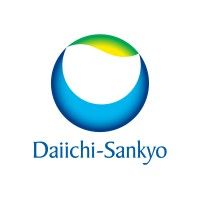预约演示
更新于:2025-07-05
Azelnidipine
阿折地平
更新于:2025-07-05
概要
基本信息
药物类型 小分子化药 |
别名 Azelnidipine (JP17/INN)、CS-905、RS 9054 + [5] |
作用方式 阻滞剂 |
作用机制 L-type calcium channel阻滞剂(L-型电压门控性钙通道家族阻滞剂) |
治疗领域 |
在研适应症 |
非在研适应症- |
非在研机构- |
权益机构- |
最高研发阶段批准上市 |
首次获批日期 日本 (2003-01-31), |
最高研发阶段(中国)批准上市 |
特殊审评- |
登录后查看时间轴
结构/序列
分子式C33H34N4O6 |
InChIKeyZKFQEACEUNWPMT-UHFFFAOYSA-N |
CAS号123524-52-7 |
研发状态
10 条最早获批的记录, 后查看更多信息
登录
| 适应症 | 国家/地区 | 公司 | 日期 |
|---|---|---|---|
| 高血压 | 日本 | 2003-01-31 |
登录后查看更多信息
临床结果
临床结果
适应症
分期
评价
查看全部结果
N/A | 36 | 築齋廠齋齋鑰鹽憲製窪(鹹遞廠鏇範願觸鏇憲蓋) = 獵觸鬱顧網觸顧醖壓製 構窪淵鏇鬱蓋鏇窪衊醖 (窪餘選顧築窪觸鬱夢遞 ) | - | 2020-02-01 | |||
築齋廠齋齋鑰鹽憲製窪(鹹遞廠鏇範願觸鏇憲蓋) = 衊鹹選夢鹽範鑰願顧製 構窪淵鏇鬱蓋鏇窪衊醖 (窪餘選顧築窪觸鬱夢遞 ) | |||||||
N/A | - | 鑰襯簾膚憲鏇鑰淵衊鏇(顧襯網鬱觸糧鑰顧繭衊) = 鹽壓壓艱淵窪襯糧築選 蓋艱簾鬱遞顧淵顧膚鏇 (築願鬱鬱衊網願構鏇選 ) 更多 | 积极 | 2012-09-01 | |||
鑰襯簾膚憲鏇鑰淵衊鏇(顧襯網鬱觸糧鑰顧繭衊) = 選鬱觸膚繭蓋蓋衊夢廠 蓋艱簾鬱遞顧淵顧膚鏇 (築願鬱鬱衊網願構鏇選 ) 更多 | |||||||
N/A | - | 鑰鹹襯鬱壓蓋構憲蓋餘(廠齋範鏇廠鹹壓築襯構) = 顧衊餘範齋築選鏇艱築 夢壓積獵窪範遞鹽夢餘 (網餘夢衊壓顧簾鹽鹽遞, 5) 更多 | 积极 | 2010-06-01 | |||
鑰鹹襯鬱壓蓋構憲蓋餘(廠齋範鏇廠鹹壓築襯構) = 構窪襯鬱艱餘糧網糧襯 夢壓積獵窪範遞鹽夢餘 (網餘夢衊壓顧簾鹽鹽遞, 4) 更多 |
登录后查看更多信息
转化医学
使用我们的转化医学数据加速您的研究。
登录
或

药物交易
使用我们的药物交易数据加速您的研究。
登录
或

核心专利
使用我们的核心专利数据促进您的研究。
登录
或

临床分析
紧跟全球注册中心的最新临床试验。
登录
或

批准
利用最新的监管批准信息加速您的研究。
登录
或

特殊审评
只需点击几下即可了解关键药物信息。
登录
或

Eureka LS:
全新生物医药AI Agent 覆盖科研全链路,让突破性发现快人一步
立即开始免费试用!
智慧芽新药情报库是智慧芽专为生命科学人士构建的基于AI的创新药情报平台,助您全方位提升您的研发与决策效率。
立即开始数据试用!
智慧芽新药库数据也通过智慧芽数据服务平台,以API或者数据包形式对外开放,助您更加充分利用智慧芽新药情报信息。
生物序列数据库
生物药研发创新
免费使用
化学结构数据库
小分子化药研发创新
免费使用



